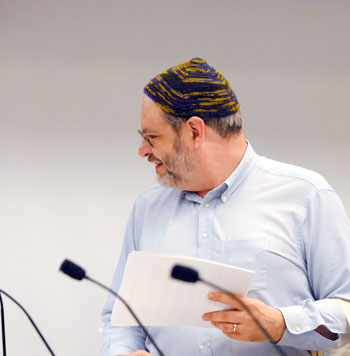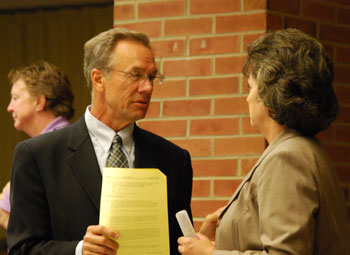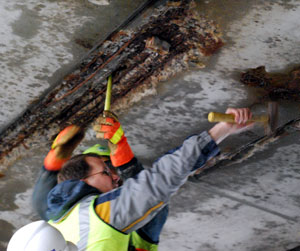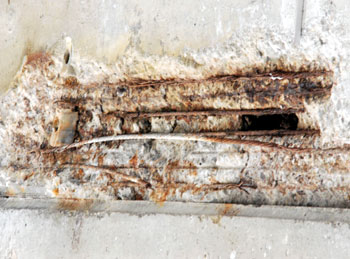University of Michigan board of regents meeting (April 21, 2011): Other business at Thursday’s regents meeting was upstaged by a late addition to the agenda – news that billionaire Al Taubman was giving another $56 million to the university.
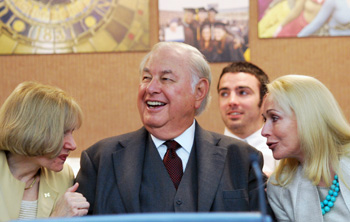
Al Taubman, who recently donated $56 million to fund medical research at UM, is flanked by his wife Judy Taubman, right, and Eva Feldman, a UM neurology professor and director of the Taubman Medical Research Institute. Seated behind them is Kellen Russell, who won a national championship in wrestling and was also recognized by regents at their April 21, 2011 meeting. (Photos by the writer.)
The donation – to fund work at UM’s Taubman Medical Research Institute – brought his total gifts for that institute to $100 million, and his total overall UM contributions to more than $141 million. He is the largest individual donor to the university.
In conjunction with this latest gift, regents approved the renaming of the Biomedical Science Research Building – where the institute is housed – in honor of Taubman.
In thanking Taubman, board chair Julia Darlow called his gift transformative, and noted that his name has been “stamped” on the university in many ways – at the Taubman College of Architecture & Urban Planning, the Taubman Gallery at the UM Museum of Art, Taubman Health Care Center, Taubman Health Sciences Library, and the Taubman Scholars program, among others. Though he did not complete a degree, Taubman did study architecture at UM and has been involved with the institution for decades.
The real estate developer, who’s widely credited with popularizing the modern shopping mall, is not without controversy. Taubman maintains his innocence, but the former owner of Sotheby’s auction house served about nine months in federal prison in 2002 for an anti-trust conviction related to a price-fixing scheme with Christie’s, a major competitor. At the time, university officials stood by him in the face of calls to remove his name from UM buildings.
In addition to announcing Taubman’s most recent gift, the regents handled a variety of other items during their April meeting. They unanimously approved an extension of the maximum allowable tenure probationary period to 10 years, and before voting heard from several UM faculty members on both sides of the issue. Regents also approved several million dollars in infrastructure projects, as well as a new degree program in health informatics.
Chris Armstrong, who made national news after being harrassed by a former state assistant attorney general, gave his last report as outgoing student government president and was thanked by university executives for his leadership. Regent Libby Maynard told Armstrong he’d helped all of them grow during the year.
And during the time set aside for public commentary, students and staff raised several issues, including negotiations with the nurses union, campus sustainability efforts, and a proposal to partner with an Israeli university for study abroad. [Full Story]





